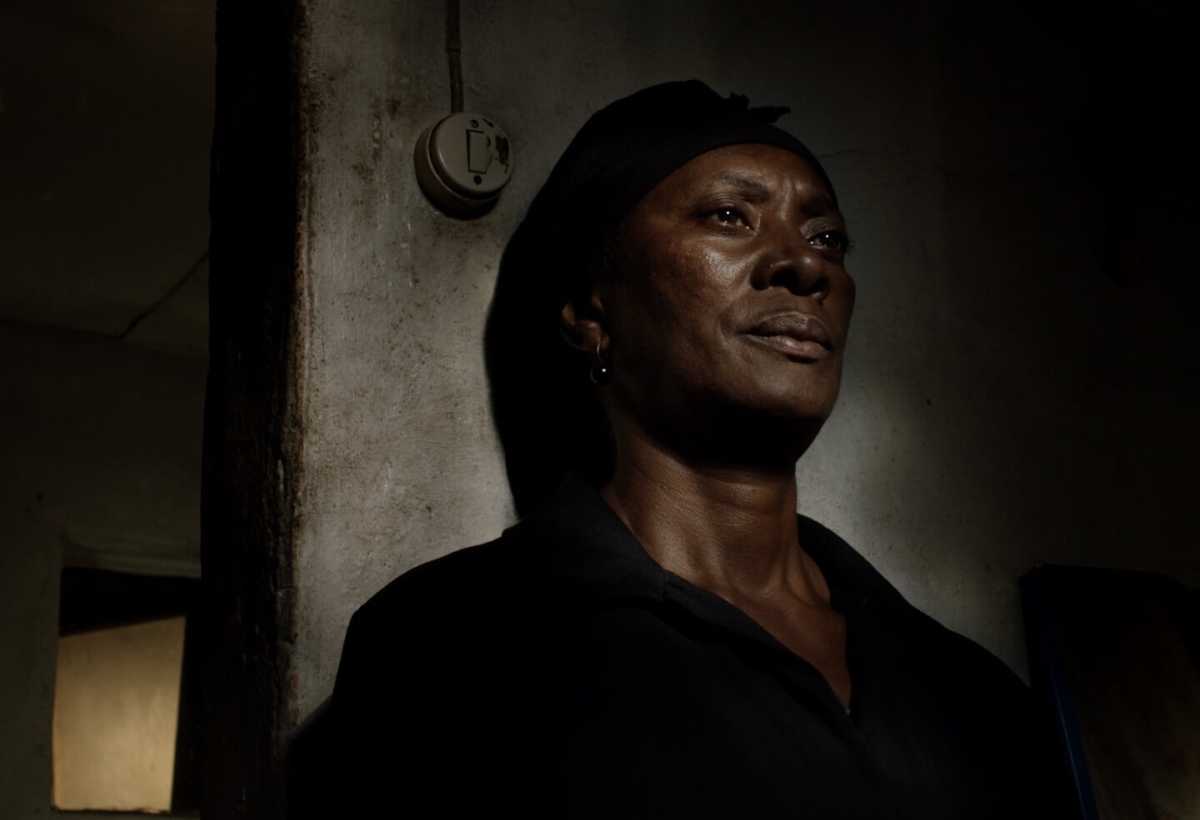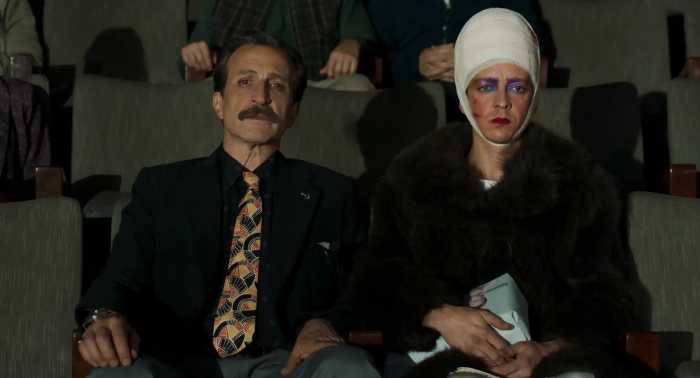If Rembrandt or Vermeer were filmmakers, they would have made Pedro Costa’s “Vitalina Varela.” Costa really is working at that level of artistic accomplishment. But his project as a filmmaker since his 1997 “Ossos” has been inseparable from his commitment to depicting Lisbon’s Fontainhas neighborhood and the scars of Portugal’s colonial legacy. The trilogy of films he made there, working with non-professional actors and strong elements of documentary, gradually brought him to international attention. None of them got a commercial release in the US, but Criterion released the trilogy as a box set.
“Vitalina Varela” begins with a few scenes showing a bed with bloody sheets and the funeral of the man who died in it. Three days later, his widow Vitalina Varela (the actor uses her real name, and the film’s story is based on her own experiences) arrives in Lisbon from the former Portuguese colony of Cape Verde, an island off the coast of Africa, for the first time. She had planned to join him for decades but never been able to. Varela becomes part of a community of Black immigrants but never quite fits in. She pieces together the details of his life. When she meets a disillusioned priest suffering from Parkinson’s disease (Ventura), both of them feel much less lonely.
In a review of Clint Eastwood’s “Richard Jewell,” critic Uncas Blythe suggested that Costa has used his depictions of marginalized people as a “career commodity.” A few years ago, I spoke with a director, praising her film by comparing it to Costa’s “In Vanda’s Room”; she demurred, telling me that she admired Costa’s aesthetics but found his work morally questionable. (A semi-documentary, “In Vanda’s Room” shows non-professional actor Vanda Duarte using real heroin for its entire length.) Over the past decade, the issue of who gets to speak about minorities has risen to the forefront in discourse about art. And Costa is a white man whose reputation rests on films about poor people, most of whom are Black.
The danger of critiquing artists on this sort of ground, however, is that it can actually reinforce the othering of people of color and/ or the poor, mystifying their lives. Costa’s films offer a very subjective perspective on life in Fontainhas — as critic Neil Bahadur wrote, they suggest “the failure of a political situation can only be effectively and authentically expressed through the depiction of its poorest conditions of living” — when it would be easier and safer to look away.
If there is a “Portuguese Dream” akin to the mythology of the American Dream, “Vitalina Varela” quickly dispenses with it. Varela is told to turn back home at the airport. Instead, she gets off the plane and heads into a nocturnal world of crumbling buildings and constant murmur. Portugal isn’t the promised land of money and middle-class job opportunities for immigrants. Varela becomes trapped in a slum. White Portuguese people don’t exist in this film. But architecture is an extension of personality, even physicality. Varela relates a story about the amount of work— which damaged her body permanently — she put into building a house for her husband.
The press kit for “Vitalina Varela” dodges the usual clichés of its form. Instead, it serves up a two-sentence description of the story and a page-long summary of “Vitalina’s Facts.” They describe the life of the real Varela, overlapping with what we’re shown in the film but going into far more detail about her background and life upon arrival in Lisbon.
Costa typically works with very small crews; in a Q&A at Lincoln Center a few years ago, he said that he agonizes over moving the camera a tiny amount back and forth before finally choosing a set-up to use. The effort pays off. But the originality of Costa’s work stems from its combination of a strong grounding in reality (including an ongoing collaboration with actors like Varela, who appeared in his 2014 film “Horse Money,” and Ventura) and its extremely stylized nature.
Leonardo Simões’ cinematography is so dark that it will be impossible to watch “Vitalina Varela” on home video. The film places a small pool of light in the center of its frame, surrounded by infinite gradations of black. Costa and Simões maintain extremely precise control over their lighting. Almost the entire film takes place at night, which contributes to its oneiric qualities. It also uses sound design to hint at a world undergoing destruction and rebuilding just out of our sight. When we finally see this process — in sunlight! — it takes on a great emotional charge. The priest even comes up with a metaphysical explanation for the film’s look. Watching “Vitalina Varela,” I saw God — and I’m an atheist.
VITALINA VARELA | Directed by Pedro Costa | In Portuguese with English subtitles | Grasshopper Film | Opens Feb. 21 at Film at Lincoln Center, Elinor Bunin Munroe Film Center, 144-165 W. 65th St.; filmlinc.org




































